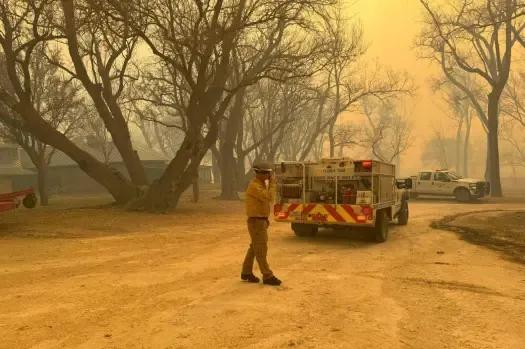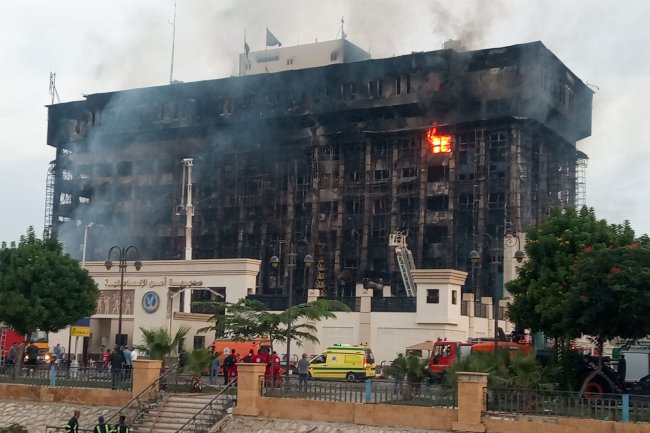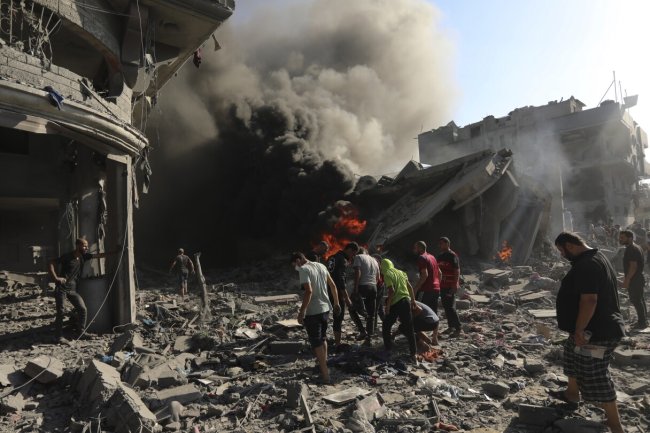Unprecedented Wildfires in Texas Trigger Disaster Declaration and Nuclear Plant Evacuation
devastating impact of Texas wildfires, leading to a disaster declaration for dozens of counties and the partial evacuation of the Pantex Nuclear Weapons Plant. Stay informed on the latest on this environmental catastrophe

Outline for "Devastating Texas Wildfires Spark Disaster Declaration, Nuclear Plant Partial Evacuation"
-
Introduction
- Overview of the Texas wildfires
- Initial impact and response
-
The Scale of the Disaster
- Counties affected and disaster declaration details
- Historical context: Comparison with past wildfires
-
Government Response
- Gov. Greg Abbott's disaster declaration
- Deployment of fire response resources
-
Impact on Critical Infrastructure
- Pantex Nuclear Weapons Plant evacuation
- Status of special materials and safety measures
-
The Role of Texas A&M Forest Service
- Monitoring and managing the wildfires
- Social media updates and public advisories
-
Weather Conditions Fueling the Fires
- Conditions leading to the outbreak
- Forecast and implications for firefighting efforts
-
The Smokehouse Creek Fire: A Closer Look
- Size, containment efforts, and impact
- Comparison to historical wildfires
-
Community Impact
- Evacuations and shelters
- Damage to homes and infrastructure
-
Safety Measures and Evacuation Procedures
- Guidelines for affected residents
- Resources available for displaced individuals
-
Support and Relief Efforts
- How the community and state are responding
- Opportunities for public to assist
-
Impact on Local Environment
- Environmental consequences of wildfires
- Long-term ecological considerations
-
Preventive Measures and Future Preparedness
- Lessons learned and policy implications
- Investments in wildfire prevention and response
-
Resources for Affected Residents
- Assistance programs and contact information
- How to access help and support
-
Official Statements and Updates
- Key announcements from government officials
- Where to find reliable information
-
Community Stories
- Personal accounts from those impacted
- Acts of heroism and community solidarity
-
Analysis: Understanding Wildfire Trends
- Expert insights into increasing wildfire activity
- Climate change implications
-
How to Help: Volunteer and Donation Opportunities
- Ways to contribute to relief efforts
- Organizations leading the support initiatives
-
Conclusion
- Recap of the situation and ongoing efforts
- Words of encouragement and looking ahead
Devastating Texas Wildfires Spark Disaster Declaration, Nuclear Plant Partial Evacuation
In the face of unprecedented wildfire activity, Texas officials have declared a disaster across dozens of counties, prompting widespread evacuations and a halt to operations at critical facilities.
Introduction
Recent wildfires in Texas have escalated to a critical situation, affecting large portions of the state and prompting significant government and community response. The blazes, described as "devastating" by officials, have led to a disaster declaration in 60 counties and have necessitated the partial evacuation of a nuclear facility.
The Scale of the Disaster
Texas is facing one of its most challenging wildfire seasons, with the Smokehouse Creek Fire marking the second-largest wildfire in the state's recorded history. The disaster declaration by Gov. Greg Abbott underscores the widespread impact of these fires, affecting dozens of counties and threatening numerous communities.
Government Response
In response to the escalating crisis, Gov. Abbott has mobilized state resources to assist the affected areas, emphasizing the urgent need for a coordinated firefighting effort. The disaster declaration is a critical step in ensuring that assistance reaches those in need as swiftly as possible.
Impact on Critical Infrastructure
The Pantex Nuclear Weapons Plant, a key facility located near Amarillo, has taken precautionary measures by evacuating nonessential personnel. This decision reflects the seriousness of the wildfire threat and the priority placed on safeguarding sensitive materials and infrastructure.
The Role of Texas A&M Forest Service
The Texas A&M Forest Service is at the forefront of the battle against the wildfires, providing updates and guidance through social media and direct engagement with the community. Their efforts are crucial in managing the fires and mitigating further damage.
Weather Conditions Fueling the Fires
The wildfires have been exacerbated by warm, dry, and windy conditions, creating a challenging environment for firefighting efforts. The forecast suggests that these conditions may persist, emphasizing the need for continued vigilance.
The Smokehouse Creek Fire: A Closer Look
This particular wildfire has burned over 500,000 acres and remains largely uncontained. Its rapid spread and intensity pose significant challenges to emergency response teams and have led to evacuations and damage across the region.
Community Impact
The wildfires have had a profound impact on local communities, with over 40 houses damaged and numerous evacuations. The city of Fritch has been particularly affected, highlighting the human cost of these natural disasters.
Safety Measures and Evacuation Procedures
Authorities have issued evacuation orders and safety guidelines for residents in affected areas. These measures are critical in protecting lives and property as the situation evolves.
Support and Relief Efforts
The response to the wildfires includes not only emergency services but also community and state-wide support efforts. Information on how the public can assist those affected is being shared through various channels.
Impact on Local Environment
The environmental impact of the wildfires is a concern, with significant damage to ecosystems and wildlife habitats. The long-term ecological effects will be an important area of study and action in the aftermath of the fires.
Preventive Measures and Future Preparedness
The current crisis underscores the importance of preparedness and preventive measures in mitigating the impact of wildfires. Investments in firefighting resources and community awareness are essential components of a comprehensive strategy.
Resources for Affected Residents
For those impacted by the wildfires, there are various resources and assistance programs available. Accessing these services is a key step in the recovery process for individuals and communities.
Official Statements and Updates
Keeping informed through official channels is crucial during emergency situations. Updates from government officials provide guidance and critical information for affected residents.
Community Stories
The resilience and solidarity of the community in the face of adversity are evident in personal stories and accounts. These narratives highlight the human aspect of the disaster and the collective effort to overcome it.
Analysis: Understanding Wildfire Trends
Experts point to various factors contributing to the increasing frequency and intensity of wildfires, including climate change. Understanding these trends is essential for developing effective response and prevention strategies.
How to Help: Volunteer and Donation Opportunities
The community's response to the wildfires includes numerous opportunities for volunteering and donations. Supporting these efforts is a way for individuals to contribute to the relief and recovery process.
Conclusion
As Texas confronts this unprecedented wildfire crisis, the focus remains on safeguarding lives, property, and the environment. The collective effort of government agencies, emergency services, and the community is a testament to the resilience and determination to overcome this challenge.
What's Your Reaction?






















